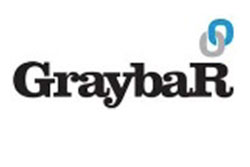Graybar, WESCO, Rexel Q1 Earnings

The last week or so has been earnings week for many electrical companies where they shared their Q1 performance. As expected, all showed improvement versus last year (after all, the last two weeks were the beginning of the COVID shutdown).
Warning – this post is long as we wanted to group the 3 publicly held electrical distributors in one post.
- WESCO is the midpoint
- Graybar is the high point
- Rexel is the low point
And at the end, Rexel details their performance by region, so this can provide some deeper insights.
And they said …

WESCO earnings report
According to their earnings call, first quarter results were “excellent”
- Believe they are “outperforming their markets” (and what is the benchmark by division?)
- Experiencing “significant margin expansion” – up, overall, 50 basis points vs last year.
- Company-wide, gross margin was 20.1%
- Attributed to insights gained from Anixter, value-based pricing and “training and development of the sales force
- Sales reps focused on passing through cost increases, managing freight, focusing on minimum order quantity issues and “value-added” selling (something all should be doing regularly and should / could be system-driven in many instances. Interesting that WESCO is now focusing on managing their salesforce in this area.)
- Now “aligning incentives across the salesforce to reward margin improvement”
- Company-wide, gross margin was 20.1%
- “Accelerating execution of the integration plan and synergy capture”
- Backlog at an all-time record (which many are experienced, the question is, for all, how much of this is COVID-induced? How much is supply-chain disruption induced? How much is “new opportunities / greenfield business” and hence organic and epitomizes sales performance and/or taking share?)
- Adjusted sales, recognizing that the comparative had to be adjusted due to the acquisition, was 3% across WESCO’s divisions on a “workday adjusted basis”. 72.5% of total revenue is in the US.
- Non-adjusted, sales were flat as there were 2 fewer days
- EES (Electrical) sales were up 4% YoY and 7% on a workday adjusted basis. EES is 42.6% of the business. (depending upon the benchmark, and who comparing against, this is either below or maybe equal, market. According to DISC, the industry is currently forecasting about 14%. More on this when we highlight information below from Graybar and Rexel, which are relatively comparable comparisons but different segments of the electrical market.)
- CSS (Communications / Safety / Security) down 4% vs PY, and 1% adjusted
- UBS (Utility) down slightly but up 2% on adjusted basis
- Broadband up double digits.
So, electrical was the bright spot with construction and OEM doing well and industrial MRO experiencing recovery. (It is interesting WESCO focuses on MRO versus overall industrial. Makes one wonder how involved they are in industrial automation and can benefit from the industrial investments being made … somewhat on the construction side but, do suppliers consider them “demand generators” for industrial automation or “fulfillment support” for MRO?
- 2021 Outlook
- UBS up low to mid-single digits
- CSS up mid-single digits
- EES (Electrical) up low single digits. (WESCO explains that this diverges from the industry forecast as non-resi construction is down and resi forecast is double digit increase. The challenge … resi is only about 10-12% of the overall electrical market. Direct to industrial is 40-50% of the total electrical market and the total market is projected up, as mentioned, by 14% (and price increases have been going crazy which further impacts the top line with “artificial growth” (may not have unit growth in some categories but will have dollar growth.))
- Actively seeking to “share best practices and focused on value-based selling (which should improve margins and sales opportunities)
- Continuing to eliminate redundancies as they “realize
cost synergies, primarily from organizational redesign (which are probably
process and people as we’ve seen some personnel movement via LinkedIn profiles
and, to a significant degree, this was expected.)
- Pulled forward some permanent headcount reductions
- Expect to reduce 1/3rd of US locations through “consolidation of Anixter / WESCO facilities.”
- “Well positioned to capitalize on secular growth trends” (which references benefits in the utility, broadband, data center / network capabilities, renewable energy, and security sectors.)
- Financially, benefited from lower T&E in Q1, which is expected (and begs the question of how companies will be able to continue to report strong earnings while this cost increases throughout the year as their staff begin to travel and customer entertainment grows in the normal course of business. In WESCO’s case, they will be returning to attending end-user tradeshows, holding events for customers, partaking of golf courses (hopefully for the right reasons, etc.). Will companies require ROI analyses for these? Will there be incentives to minimize this? Will Wall Street understand? Will T&E budgets be adhered to?)
Insights from Analyst questions about WESCO’s earnings:
- WESCO says it has not seen “any material disruptions in Q1” and WESCO infers that this is due to their leverage by saying “remember, we doubled the size of the company.” They also say that they have “expanded their inventory.” (must be the only distributor! If this is true, then suppliers are giving WESCO significant preference and suppliers should get ready to respond to distributor telephone calls.)
- Overall, they estimate 1-2 points of positive
pricing in Q1. (which seems low but that could be due to ability to pass on
pricing in contracts, especially in the utility space.)
- Another analyst shared that a WESCO competitor called out a positive non-cable pricing of 3.6%, which WESCO responded that “it’s the residential side and not our business” (but, as distributors know, anything relating to construction, metals, imports is having price increases.)
- April sales were up 20% vs prior year (which is to be expected, at minimum, given that last April was the depth of the COVID shutdown and some states had construction closed.)
Overall “gut feel” is that electrical had margin performance and WESCO sought to focus on improving numbers where they good for a good earnings report … accelerating headcount change to reduce costs / drive synergy benefits, using the PPE write-down, tax rate changes, et al and increased focus on margin improvement … but the report did not mention much in growing the business and anything solid to report “growth” and “taking share.” John’s comments in the report about “positioned to take advantage of secular growth trends” is, longer-term, where the opportunity is … utility investment, 5G / broadband / data, potentially renewables. But today’s business drivers are its industrial business and construction, and these will also be around long term. When / if WESCO hits on all cylinders, the company can have significant upside potential.

Graybar
According to a Graybar press release, their earnings were:
- Reported “highest Q1 net sales and net income in company history”
- Q1 had $1.9 billion in net sales, a 7.2% increase (consider, this is increase with no mention of “adjustments” for workdays. Maybe they did, maybe they did not. They do have the same reporting standards as WESCO due to having to file SEC documents.)
- Gross margin was 18.9%
- 58.5% of the business is construction, 25.7% is
CIG and 15.8% is industrial / utility. This was a 1% customer mix increase for
construction, hence inferring that construction sales grew at the fastest rate
to achieve total sales growth.
- In the 10-Q Graybar shared that construction was up 8.5%, CIG was up 3.4% and industrial / utility was up 8.7% (all higher rates than WESCO reported and WESCO states they are “outperforming markets?”)
- Graybar made $11.5 million in qualified and non-qualified pension contributions in Q1, comparable to 2020. (Which, if annualized, is $45-50M in contributions on top of the net income for the quarter of $47M, which annualized is about $250M) for a total of $300M or a 4.16% net. (Note, this is “back of the envelope” math and may be +/- a little re net profit, recognizing that few, if any, of Graybar’s competitors offer a similar pension plan. Their net profit could be higher with other “add-backs” – and they paid $6.9M in cash dividends in Q1, which, annualized, is another $28M which would boost the net to 4.56%.)
So, Graybar performed well in Q1, especially in the construction market and could be considered a proxy for the segment. Margins seem good and net appears good.

Rexel Q1 earnings
From their press release with a focus on North America
- Worldwide, same-day sales up 8.6% (on a “same-day” basis)
- “Same day” sales in US were down .4%, Canada was up 6%
- Versus Q1 2019, US was DOWN 6.2%
- “Same day” sales in US were down .4%, Canada was up 6%
- Globally, “favorable pricing environment on cable / wire of 290 basis points and non-cable of 240 basis points.
- Digital sales in North America up to 8.9% of sales, an increase of 37 basis points (note: this does not mean that it is all web-based sales as other ordering mechanisms qualify to be defined as “digital sales.”)
- North America
- Sales dropped 10.5% n reported basis including negative currency effect of 7% due to depreciation of the dollar versus the euro and a -1.9% due to the sale of Gexpro Services. Overall, sales were up 1.2% “driven by Canada”.
- US – sales were down .4% on same-day basis. “Resilience” in Northwest, Northeast, Mountain Plains, Southeast, California, Florida inclusive of “growth” in Northwest based upon favorable pricing conditions.
- “Slow” recovery in Midwest and Gulf Central as these are “largely exposed to project business.”
- Overall price improvement in North America was 3.6% (note, this is both US and Canada so could be more / less in each country.)
- Acquisition of WESCO Utility in Canada was only a $70 million CAD business (about $50-55M USD)
- Additional insights from their presentation:
- North America is 32% of company sales
- From analysis of digital sales in France, “value of a digital basket is 37% higher than an off-line basket in Q1 (this may not translate to US and can have multiple factors; however, some increase should be expected, and definition of “value” is not clear in presentation – sales? Gross profit? Net profit / order?)
- Digital sales in Q1 were driven by residential
- Performance by region (Distributors can benchmark themselves)
- Northwest – 30% of sales, up 13.7%
- Northeast – 6% of sales, up 5.4%
- Mountain – 8% of sales, up 1.6%
- Southeast – 15% of sales, down 1.1%
- California – 10% of sales, down 3.2%
- Florida – 11% of sales, down 4.6%
- Midwest – 9% of sales, down 8.5%
- Gulf Central – 11% of sales, down 15.2%
- Regional “Highlights”
- Resi represents 22% of the Northwest’s business; regional growing at 25%+
- Northeast having “growth” in industrial and OEM (very niche markets in the Northeast; not core growth segments for the market.)
- Mountain Plains – Vegas and Phoenix commercial markets growing, otherwise resi.
- Southeast – Had some success in automation.
- California – growth in solar / EV
- Florida – resi and recovering industrial (presumably driven by Rockwell), airport projects and entertainment (driven probably by Disney and hotels re-opening.)
- Midwest – improvement from Q4 (down 11.7%), impacted by automotive shut-downs / slowdowns.
- Gulf Central – industrial down 25% with oil / gas down 34%. Seeking to diversify into commercial and resi.
So, when looked in comparison to Graybar and recognizing that Rexel and Graybar are more focused in the construction segments and serve contractors, Rexel significantly underperformed … and Graybar is strong in the project business.
And if we compare all three … Graybar is outperforming in the electrical space and in the construction space.





















